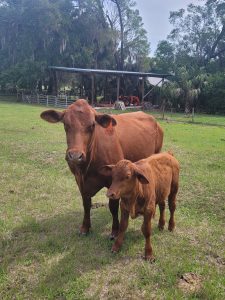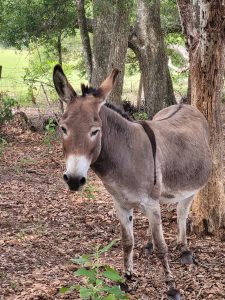 As cooler weather arrives in Central Florida, it’s time to start thinking about pasture preparation for the coming season. Whether you’re a seasoned pasture owner or a newcomer to caring for your land, taking the right steps now will ensure a healthier, more productive pasture come spring.
As cooler weather arrives in Central Florida, it’s time to start thinking about pasture preparation for the coming season. Whether you’re a seasoned pasture owner or a newcomer to caring for your land, taking the right steps now will ensure a healthier, more productive pasture come spring.
Assess Your Pasture’s Health: Start by evaluating the current condition of your pasture. Walk your property and take note of any issues that may need attention.
- Check for Weeds: Fall is an ideal time to deal with weeds before they spread. Weeds like sandbur, broom sedge, and dollarweed are common and can quickly take over a pasture if not controlled. Consider spot-treating with a selective herbicide or manually pulling out invasive species if the area is small.
- Evaluate Grass Coverage: Look for bare patches, uneven growth, or signs of overgrazing. These areas may need reseeding or additional care to help grasses grow back strong in the spring.
- Soil Health Check: The sandy soils in Florida can lack essential nutrients. If you haven’t done so recently, now is a great time to get a soil test. This will help you understand the pH levels and identify nutrient deficiencies. A well-balanced soil will encourage healthier grass growth and improve your pasture’s resilience. If your soil needs lime, now is a good time to get that started as well.
- Improve Drainage: Florida’s weather is unpredictable, and while we experience heavy rains, drought conditions can also impact pasture health. If you have areas where water tends to pool after heavy rain, it may be time to improve drainage. Create swales or ditches to direct water away from sensitive areas and prevent soil erosion.
- Inspect Fences: Check for damaged or weakened sections of fencing, particularly those that may have been affected by storms. A strong fence is essential to keep livestock in and predators out.
- Gates and Watering Systems: Ensure gates are functioning smoothly, and any troughs or automatic waterers are clean and free of debris. It’s important to keep infrastructure in good shape, as these systems can get neglected and result in bigger issues down the road.
 Plan for Grazing Rotation: Managing grazing is essential to prevent overgrazing and promote healthy regrowth. Plan your grazing schedule to allow sections of your pasture to rest and recover.
Plan for Grazing Rotation: Managing grazing is essential to prevent overgrazing and promote healthy regrowth. Plan your grazing schedule to allow sections of your pasture to rest and recover.
-
-
-
-
- Rest Periods: If you haven’t already, consider rotating your grazing areas to give sections of your pasture time to rest and recover. This promotes better grass growth, helps manage soil compaction, and reduces the risk of overgrazing.
- Create a Grazing Schedule: Whether it’s seasonal or rotational, a grazing schedule helps maintain the balance between animal use and pasture recovery.
-
-
-
Preparing your pasture now, in the cooler months, gives you a head start on maintaining healthy, productive land for the coming year. By putting in the effort now, you’ll set yourself—and your pasture—up for a successful growing season. Please call Ashley at 386-822-5778 with any questions and if you would like to set up an on-farm pasture walk.
 0
0
